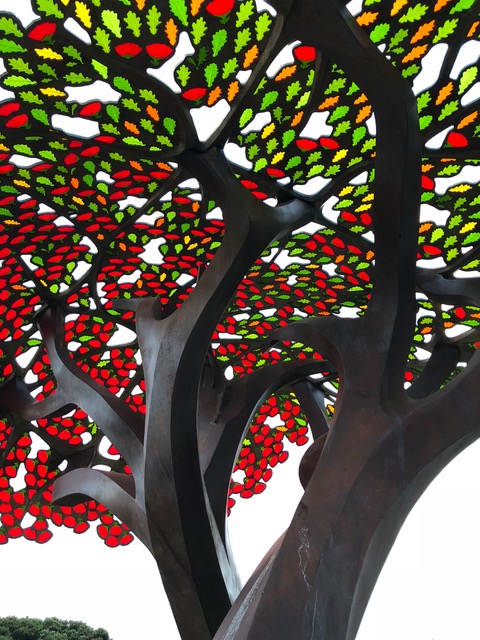
The Left Hand of an Artist
by SARA SHAKERI
The teacher entered the classroom. She was a short, fat woman with a round face and big black glasses that sat on her nose. The smile on her face looked insincere. She asked everyone to introduce herself. After a while, she gave us each a blank piece of paper and asked us to draw. I felt happy because I loved drawing. I began to draw a picture of the school with its big beautiful yard. As I drew, I became aware that the teacher was standing over me. I looked up and saw that she was staring at my hands. “Oh my, are you left-handed?” “Yes teacher” I said hesitantly. She took the colored pencil from my hand and told me I should draw with my right hand only. “I don’t want to see you write or draw with your left hand anymore. Do you understand?” she said. “Yes teacher,” I said. I felt alarmed as well as guilty and ashamed. I thought there was something wrong with me.
The teacher’s criticism did not end that day. When she dictated our letters to us, I, once again, automatically wrote with my left hand. This time, she walked towards me and hit my left hand with a ruler. “I told you that you shouldn’t write with your left hand,” she said. “Teacher,” I said with tears in my eyes, “I can’t write with my right hand.” But she refused to listen and told me that if I wanted to learn to write, I should do so with my right hand. “If you write with you left hand,” she said, “people will think you are stupid and clumsy.” I would also become an unlucky person, she explained.
That day was one of the most difficult days of my childhood. I thought that I was a stupid and strange child because I was left-handed. And from that day, I have always been apprehensive about writing or drawing with my left hand. Throughout history, people have been persecuted for being left-handed. Left-handed people were routinely accused of consorting with the devil; and it was thought that people who were left-handed were stubborn, rigid, and obsessed with cleanliness. Superstitious people also believed that left-handed people were willful and rebellious, as well as awkward and clumsy. Often, lefthanders were forced to use their right hand. And some tried as children to switch to their right hand to avoid persecution and ridicule.
Today, I am a mix-handed person, someone who writes with both hands, left and right. I am also an artist who works in the stark black and white medium of charcoal on paper. I specialize in portraits. Working with charcoal gives me a feeling of peace, as I watch my persecuted left hand become the hand of an artist.
I am comfortable now using both of my hands, but I can never forget the pain of those early days. When I started to school, I was excited to meet my very first teacher. But my teacher was a superstitious woman who convinced me that left-handedness was abnormal, strange. She forced me to write with my right hand while my poor left hand, the hand I favored, was left idle. In time, I learned to write with both hands. But when I draw, when my soul tells me to set down a beautiful image on paper, I am faithful to my left hand, for my left hand is the hand of the artist.
Photo by Bev Rennie

